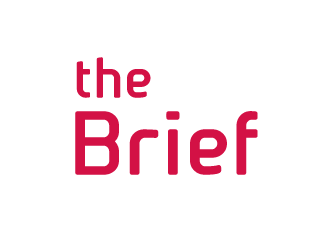Nick Rowles-Davies - managing director of Burford Capital (UK) – on exploring finance models.
But DBAs are just one method of funding which lawyers have to deal with in the modern-day post-recession marketplace. Clients are more sophisticated than being prepared to accept the standard hourly-billing retainer. Standing still when it comes to finance around cases is no longer an option for lawyers.
Fixed and capped fees
Fixed fees have grown in popularity over the past few years. They can certainly be an effective solution – the uncharted wilderness of rising costs for clients is given some clarity. Careful litigants, particularly those without litigation experience can find comfort in the fixed fee model. They are, without doubt, a significant challenge for law firms, which is why there are specialists in the area who operate only on this model.
It relies heavily on the team running the case being supremely disciplined, both in the planning of the case management and hugely effective cost budgeting. Each case will be a learning curve for a law firm going down this route. There is no possible uplift with fees that are purely fixed, although capped fees differ to fixed fees by allowing the law firms to charge the hourly rate but not exceed the agreed cap.
Conditional Fee Agreements
Conditional fee agreements (CFAs), or no win, no fee agreements, place all the risk on the firm, which means most prudent law firms are careful how many of these sorts of cases they run at any one time – given the binary nature of the arrangement.
For the lawyer, they can represent a severe lack of cash flow, at least until the successes begin to bring in large fees. Given the time that large pieces of litigation take to process and the risky nature of litigation, over exposure to CFAs can severely harm law firm growth strategies. Again, a hybrid, discounted or partial CFA is an arrangement where instead of being paid nothing unless the case wins, can be the solution here as lawyers are paid something as the case progresses and then receive the balance of their fess plus uplift on success. It is a sensible mix of risk sharing and interest alignment. The arrangement provides value for money for clients, while also giving a level of financial protection for the proactive law firm.
Types of Litigation and Legal Finance
The changes and challenges to cost budgeting, and the various billing models, bring with it opportunity for law firms to seek new finance models from third parties, such as Burford Capital.
Third Party Funding is growing in stature and use in England and Wales, and it could be argued that law firms not considering it are falling behind the curve with the many who already deploy it. Whilst the various retainer and funding options are to be welcomed, they also place the majority of risk on the law firm.
Funding not only transfers that risk to the funder, but also provides cash-flow and given the right strategy, business growth.
The leaders in the funding world have evolved, and there are many different structures and offers on the market.
Traditional one-off Third Party Funding
This is funding in its original form – the funding of one meritorious case by a Third Party Litigation Funder. The funder ‘invests’ in the case by bank-rolling the fees on a non-recourse basis, taking a slice of the damages upon success.
However, this approach, certainly by sophisticated funders, has evolved. One way it has is with the funding of a portfolio or basket of cases and work in progress by a funder of a particular law firm. The attraction to the law firm is improved pricing from the funder and significant risk transfer away from the law firm. For the funder, the risk is spread across a number of cases and therefore, reduced.
In a further advance on the funding model, a funder with the appropriate skills of assessment and due diligence, litigation or indeed arbitration, can be considered as an asset. The use of litigation as an asset and the raising of capital against such security are not commonplace, but it has been done by sophisticated litigation financiers.
Burford recently provided finance to a listed UK company using its arbitration against Bolivia as the asset on which to loan against. The arbitration – which the firm could afford to pay for but wanted to grow its business at the same time – was successful.
Benefits of Funding
Litigation finance allows law firms to share the risk with a funder seeking to back the right case. It also provides cash-flow while cases are in the pipeline, lessening the strain on finances and allowing an increase in size of a contingent case load. Funding can be applied at any stage of litigation, and also has the ability to assist law firms in cases of “fee fatigue” and slow-pay clients.
Not only do litigators see the benefit of funding, but so do their colleagues in business development. The use of litigation funding as a business development tool is becoming more common place – it gives the lawyer an opportunity to pitch for work, yet at the same time offer a funding (and risk transfer) solution to the litigation problem.
Nick Rowles-Davies - managing director of Burford Capital (UK) & author of Third Party Litigation Funding.









